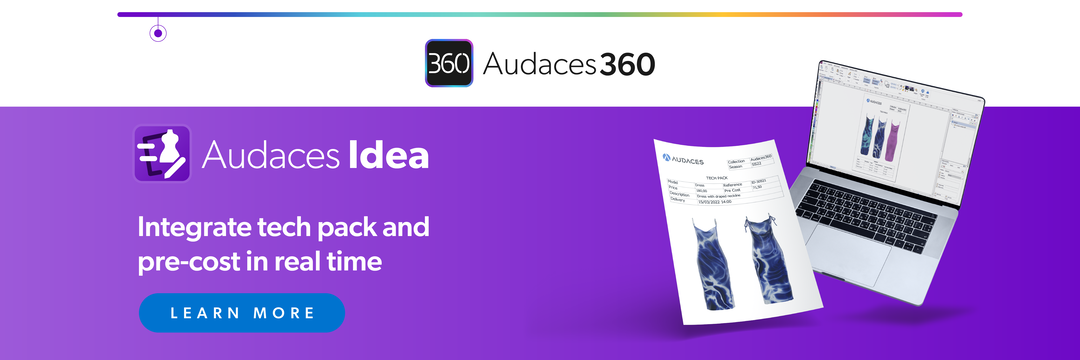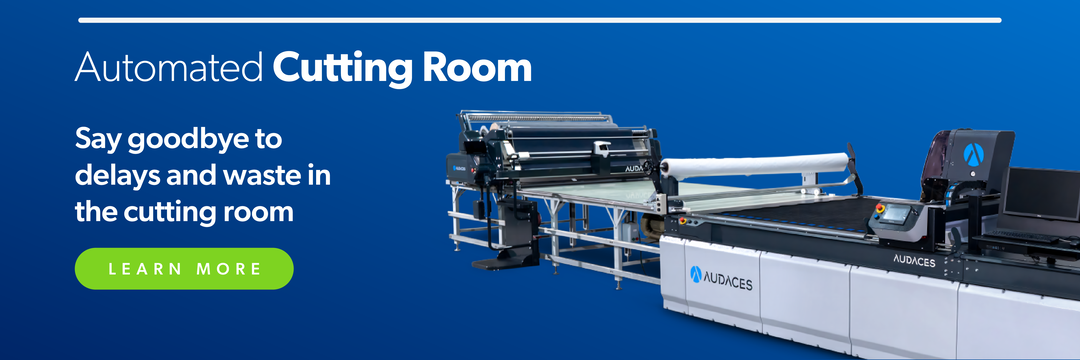Summary
- Global industrial production has long been a driving force behind economic growth.
- From the Industrial Revolution to today’s automated factories, it impacts how nations develop.
- Experience the future of the fashion industry with Audaces360. Start your free trial now!
Global industrial production plays a key role in shaping the world economy. It influences everything from employment rates to the prices of goods and services.
After a turbulent period marked by the COVID-19 pandemic, the sector is finally showing signs of recovery. According to a report by UNIDO, global manufacturing output grew by 1.3% in the first quarter of 2025.
This positive trend reflects a broader recovery that has been unfolding over the past few years. And to help you better understand this evolving scenario, we’ve created this guide.
Happy reading!
Sumário
What is the impact of global industrial production?
Global industrial production has a profound influence on the world economy. It is directly tied to the availability of goods, job creation, and the economic development of nations.
Manufacturing sectors drive exports, stimulate domestic consumption, and support infrastructure growth.
A strong industrial base often indicates a resilient economy, capable of withstanding external shocks and supporting long-term development.
Beyond economics, industrial production shapes the social fabric of countries, generating employment across different skill levels. It often serves as a key source of income for both urban and rural populations.
Learn more: How does China industrial production impact fashion?
A brief history of global industrial production
The roots of global industrial production go back to the 18th century. This was when the Industrial Revolution began in Britain.
In the 19th century, industrial practices spread across Europe and North America. Countries began investing heavily in railroads, factories, and urban infrastructure.
By the 20th century, industrial production had become truly global. Globalization, along with improved transportation and communication, allowed companies to source materials and labor from different countries.
However, the path hasn’t been without setbacks. Wars, economic downturns, and oil crises disrupted growth at different points in time. More recently, the COVID-19 pandemic exposed weaknesses in global supply chains and labor systems.
Today, we are entering a new era driven by digital transformation, Artificial Intelligence, and sustainability. Global industrial production is no longer just about scale — it’s about speed, flexibility, and environmental responsibility.
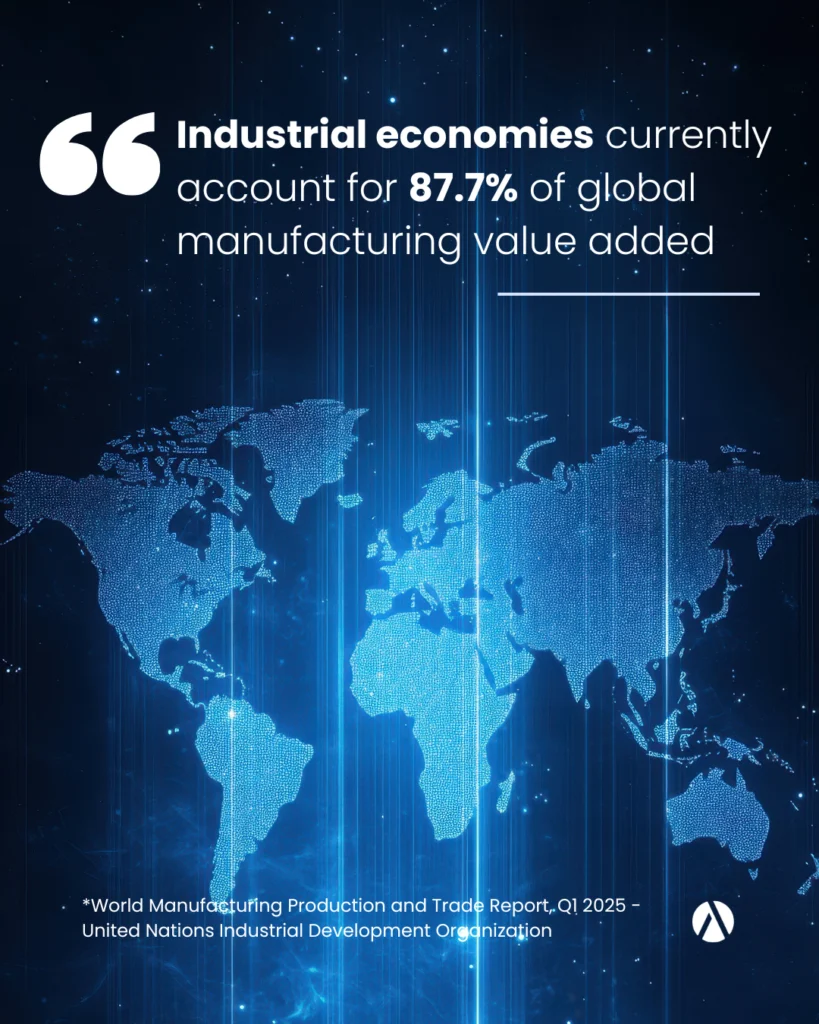
Learn more: How United States industrial production shaped fashion
Essential data on global industrial production
To better understand the global manufacturing landscape, it’s important to look at key data and trends.
These insights reveal how the distribution of production is across regions and how different sectors are evolving over time.
Leading manufacturing countries
The list of leading manufacturing countries has changed significantly over the decades.
Industrial powerhouses like the United States, Germany, and Japan have long been in charge. However, in recent years, countries like China and India have quickly risen.
This shift reflects changing labor dynamics, technological investment, and the globalization of supply chains.
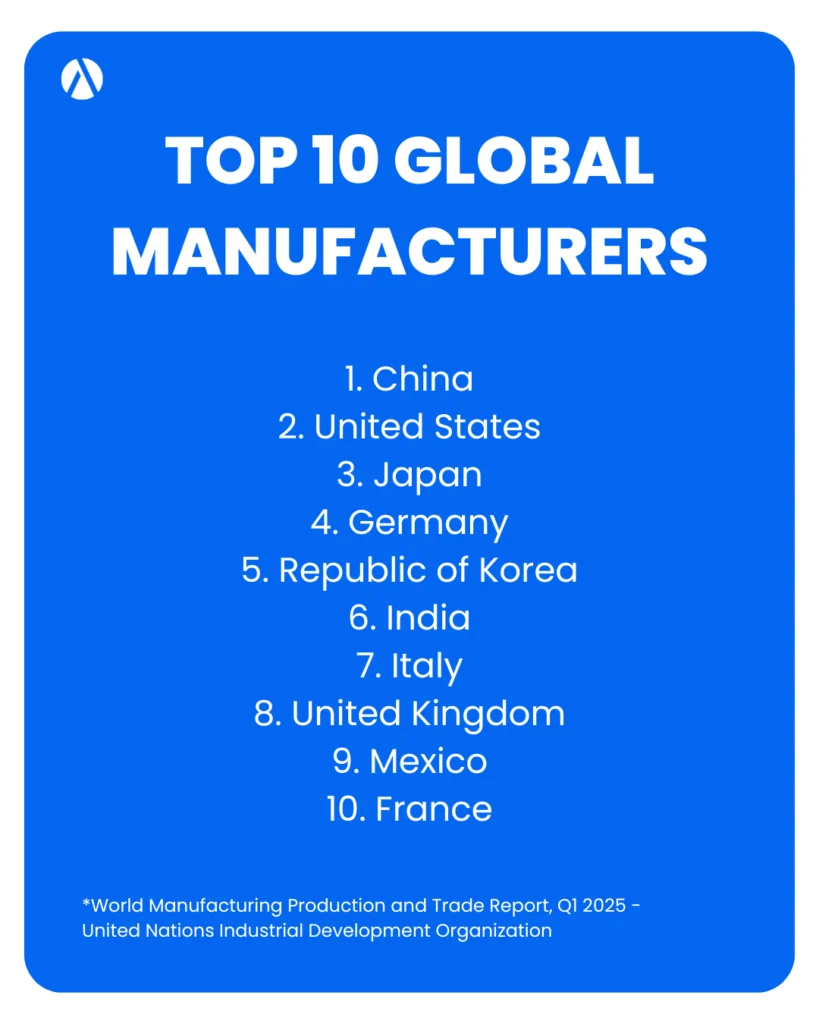
Sustainability
Sustainability has become a central concern in global industrial production. Traditional manufacturing processes often consume large amounts of energy and natural resources, contributing to pollution and environmental degradation.
In response, governments and companies are placing greater emphasis on reducing emissions, conserving resources, and adopting cleaner practices.
Circular economy models are gaining traction as a way to minimize waste and extend the life cycle of materials. These models encourage reuse, recycling, and more efficient use of inputs in production.
At the same time, regulations around emissions, energy use, and environmental impact are becoming stricter. They push industries to innovate in order to comply and remain competitive.
Learn more: Find out how fast fashion and sustainability can coexist in the apparel industry
Technologies
Automation, robotics, and the Internet of Things (IoT) are streamlining processes, improving precision, and increasing productivity. These innovations reduce the need for repetitive manual tasks and help manufacturers respond faster to changes in demand.
Digital tools like 3D design software and simulation platforms allow companies to prototype and test products virtually before production.
This leads to faster development cycles, fewer errors, and lower material waste. Combined with cloud-based systems and AI, manufacturers can now manage operations more efficiently and make data-driven decisions.
Ready to take your company to the next level and maximize productivity? Get our free exclusive guide filled with expert tips to make it happen!
How is technology modernizing global industrial production?
Technology is reshaping how industrial production operates on a global scale. From smart machines to intelligent software, new tools are making factories more efficient, flexible, and sustainable than ever before.
Automation and robotics
Automation and robotics are transforming the industrial sector, reducing reliance on manual labor for repetitive or hazardous tasks.
Robotic arms now assemble complex products with speed and precision. Meanwhile, automated systems handle everything from inventory management to quality control. These solutions help companies scale operations without compromising consistency.
As labor costs rise and demand fluctuates, automation provides greater flexibility. Machines can work around the clock and quickly adapt to production changes with minimal downtime.
3D design and production software
These tools allow manufacturers to develop products with incredible speed and accuracy.
Designers can create detailed digital prototypes and visualize how a product will function before production.
They are especially valuable in industries that require high levels of customization. Fashion, automotive, and consumer goods manufacturers use 3D software to test different variations of a product quickly.
This accelerates the design-to-production timeline while minimizing waste and resource use.
Learn more: Find out everything you need to know about 3D fashion design
On-demand manufacturing and Artificial Intelligence
On-demand manufacturing is gaining popularity as industries shift away from mass production toward more flexible, customer-driven models. Instead of producing large inventories, companies now create goods in smaller batches.
Artificial Intelligence is a powerful driver behind this shift. AI algorithms help forecast demand, optimize inventory, and automate decision-making.
In production, AI systems can detect defects, monitor machine performance, and adjust processes in real time to maintain efficiency.
Together, on-demand manufacturing and AI allow businesses to respond more quickly to changing consumer needs.
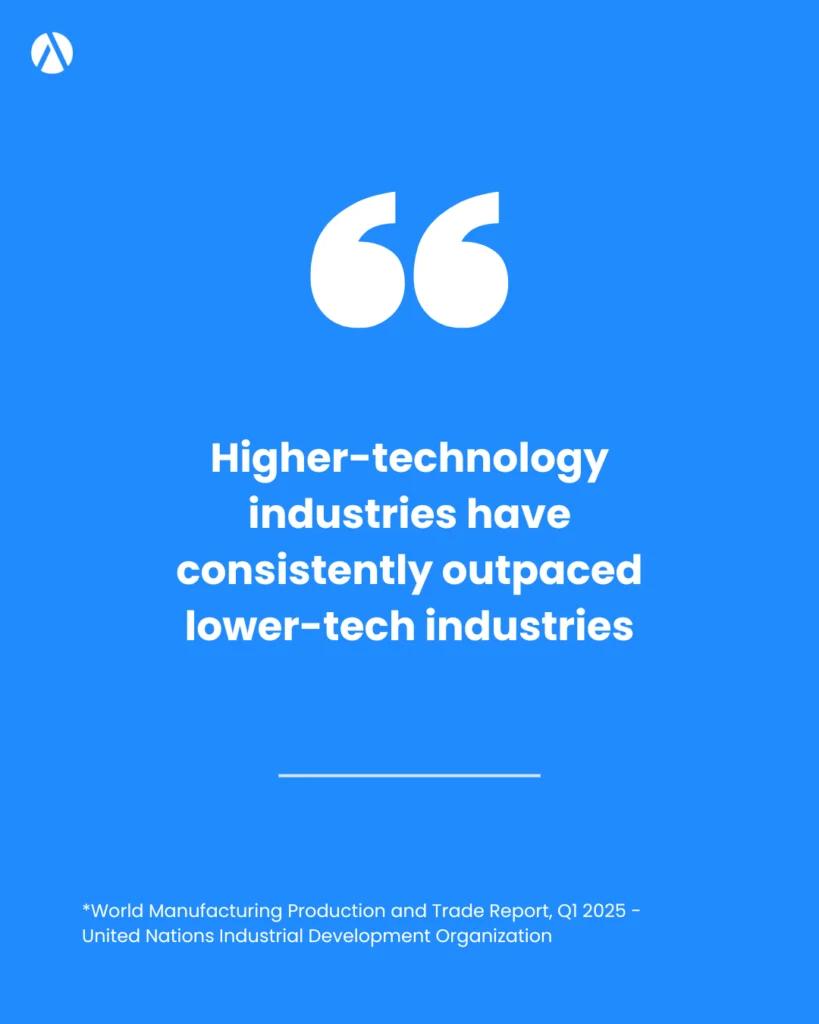
Technology for sustainability
From energy-efficient machinery to smart resource tracking, innovations are helping industries reduce their environmental impact.
Companies are adopting cleaner technologies and real-time monitoring tools to cut emissions and minimize waste.
For manufacturing industries, sustainability is becoming a strategic priority. Technologies like renewable energy integration and carbon tracking platforms are helping businesses comply with regulations.
These tools not only reduce harm to the planet but also lower long-term operational costs.
Furthermore, digital platforms enable transparency in sourcing and production. Manufacturers can provide accurate data about where and how they make products.
Learn more: What is a digital product passport in fashion?
Big Data and predictive analytics
Big Data is unlocking new possibilities in industrial production by turning massive volumes of information into actionable insights.
Sensors, machines, and connected devices constantly generate data on everything from energy usage to equipment performance. When analyzed, this data helps identify inefficiencies and uncover hidden opportunities for improvement.
Predictive analytics takes this one step further. By analyzing historical data and patterns, manufacturers can anticipate equipment failures, forecast demand, and optimize production schedules.
This reduces downtime, avoids overproduction, and enhances overall productivity.
Learn more: What is a smart factory and how to become one?
Automate your fashion industrial production with Audaces solutions
Learn how Audaces solutions can streamline your processes:
Audaces360
Audaces360 integrates cutting-edge digital innovations to optimize workflows in the textile and apparel industry.
It caters to companies of all sizes and types, offering the flexibility to scale with your business needs.
All solutions were carefully developed to address the specific challenges of the field. They streamline the design and production processes, saving valuable time and resources.
The platform boasts a comprehensive range of functionalities, including pattern making, marking, collection management, vector drawing, and 3D creation.
In addition, a fashion Artificial Intelligence to assist you along the way.
Audaces Cutting Room
By embracing cutting-edge technology, garment manufacturers can achieve significant improvements in the production process. From greater design flexibility to enhanced efficiency and reduced costs.
This is where Audaces Cutting Room steps in! Our experts will thoroughly assess your company’s needs and create a comprehensive report.
Then, our team will develop a personalized project to achieve your goals and unlock your company’s full potential.
Rely on Audaces’ cutting-edge machinery to automate your production process. Achieve impeccable cuts on curves and details, speeding up your deliveries and minimizing fabric waste through automation.
Discover how uniform manufacturer Aspen transformed its business with the fully automated cutting room:

Your company can achieve this same progress. Connect with one of our consultants and get started!
FAQ
Global industrial production has a profound influence on the world economy. It is directly tied to the availability of goods, job creation, and the economic development of nations.
The top 5 countries include China, United States, Japan, Germany, and Korea.
Automation, robotics, 3D design, production software, Big Data, and Artificial Intelligence are some examples.




